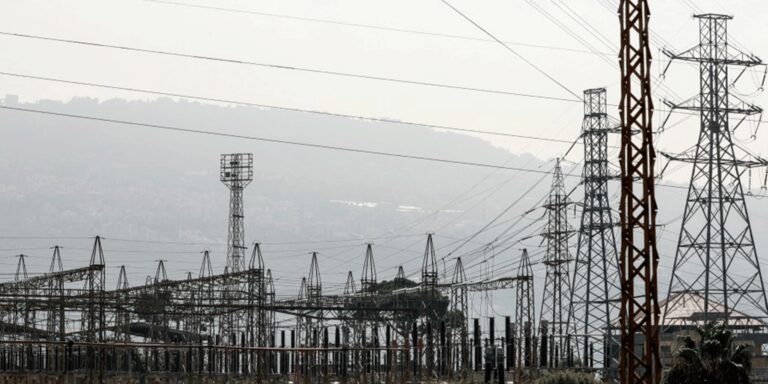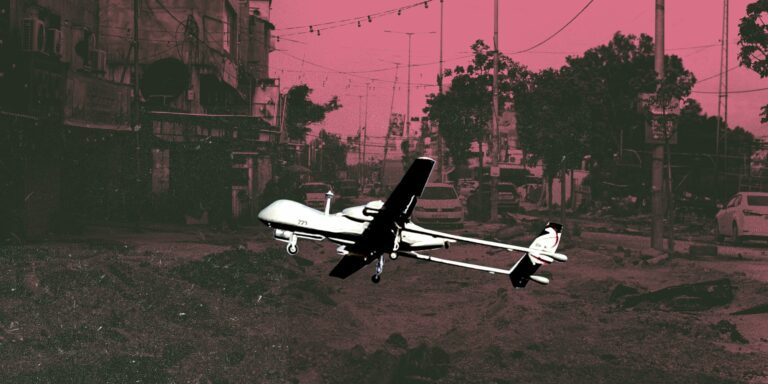“We were shocked to see what happened.” It is a phrase repeated over and over again by the Iranian feminists we spoke to in order to delve deeper into the new reality created by the 2022 uprising, in which both men and women participated. Yet, the phrase did not come as a shock for people who had witnessed the protests and the way they were handled by the Iranian regime.
As with most uprisings and revolutions, it is impossible to determine the last drop that triggered last year’s wave of protests in Iran. How could a feminist cause give rise to a movement, while living conditions and restrictions on liberty sparked most other uprisings in the region?
There is no single answer to this question. But the fact is that a feminist cause, in the direct sense of the term, revived a popular uprising in a country with which we share many concerns. A popular uprising that is being suppressed by the state with all possible means, either violently or through propaganda and smear campaigns.
“The Iranian people are ready to pay any price,” wrote Iranian lawyer Shirin Ebadi, winner of the 2003 Nobel Peace Prize, in a recent article. “For every dead person there are thousands of demonstrators.”
Ebadi, who has been living in exile in London since 2009, described the killing of Mahsa Amini on September 16, 2022, at the hands of Iran’s morality police, as a “rebirth.”
“The burial of her body turned the suppressed cry of the Iranian women into the slogan “Woman, Life, Freedom,” according to Ebadi. Amini ensured that Iranian men today know that “the victory of women is a prelude to their victory, and that democracy will enter Iran through the gate of women’s rights.”
The Feminist View
The quietness that currently rules most Iranian streets was not motivated by a desire for calm, but survival. However, the opposition headed by Iranian emigrants and exiles has not quieted down, as dependence on them has only increased.
Everyone acknowledges there are vast differences between the many parties that make up Iran’s opposition. Some are waiting for the opportunity to call for the return of the monarchy, while others lack popularity both today and in the past.
“The demand for the return of the monarchy, which we hear at times, has nothing to do with the slogan ‘Woman, Life, Freedom,’ as it is in essence patriarchal,” said Iranian feminist Niloofar Golkar, a doctoral candidate at York University’s Department of Politics, who is doing a Ph.D on conflict and solidarity movements.
Golkar is part of the political current that formed on the margins of the Iranian opposition, the roots of which were planted by the 2006 feminist campaign One Million Signatures for the Repeal of Discriminatory Laws.
As the name indicates, the campaign launched by Iranian women’s rights activists aimed to collect one million signatures to pressure the Iranian parliament to reform the country’s gender-discriminatory laws, including equal rights for women in marriage, divorce and inheritance, and an end to polgamy and temporary marriage.
The oppression of women in Iran has always gone hand in hand with the oppression of ethnic minorities. And the two coincided on September 16, 2022, with the killing of the 22-year-old Mahsa Amini, who was Kurdish. Known as Gina Amini in Kurdish, she became the face of the 2022 uprising.
“This was the convergence we had been waiting for,” said Berlin-based researcher Nisreen (a pseudonym). “It happened automatically as a result of Mahsa’s murder.”
With colleagues from over thirty countries, including Niloofar Golkar, Nisreen is the co-founder of Feminists For Gina, a network of female human rights activists who were once part of the One Million Signatures campaign and the Iranian Green Movement,
The latter was a political movement that arose after the 2009 presidential elections. The Green Movement demanded the removal of the winner, hardliner Mahmoud Ahmadinejad, from office. Many followers of both women’s movements were forced to flee Iran due to political oppression.
“If Mahsa had been killed in a different city, it would not have gained such momentum and attention,” said Nisreen
The 2022 Uprising:
The Next Chapter in the One Million Signatures Campaign
Few people could have foreseen the repercussions of Mahsa Amini’s death in detention. And yet the protests did not entirely come as a surprise. Iran has a long history of women activists and feminist struggle, as well as a long history of oppression extending over decades. When hardliner Ebrahim Raisi became president on August 3, 2021, he expanded the role of the morality police, which saw injustice and oppression only grow worse.
Iran’s legacy of women challenging power and authority dates back further than the 1979 Iranian Revolution. Take for example Zainab Pasha al-Tabrizia, an icon of both the labor and women’s struggle, who during the 1890 Tobacco Protest led a group of women during an uprising in Tabriz.
Before her, there was the poet and women’s rights activist Tahereh Qurrat al-Ayn, who took off her hijab during a in 1848 political meeting and called for equality. She was executed in 1852 for belonging to the Babi faith.
The aftermath of the 1979 revolution saw a process of islamization, in which the hijab (veil) was imposed on women, many of whom had initially supported Ayatollah Ruholla Khomenei’s rise to power. The mandatory hijab (veil) paved the way for the current gender segregation system.
The first demonstrations for women’s rights took place in the early 1980s and led to widespread arrests of protesters who dared to object to the strict laws imposed by the men of first the Islamic Revolutionary Committee” and then the parliament.
Yet, with the 8-year Iran-Iraq War the glow of those movements quickly faded. In fact, after a protracted absence of feminist movements since the 1980s, the One Million Signatures campaign was the first large-scale attempt to fight for equality.
40-year-old researcher and human rights activist Leila (a pseudonym) left Iran in 2012. She used to live in Tehran and was active in the One Million Signatures campaign between 2005 and 2008, as well as the Islamic Green Movement in 2009.
According to Leila, the activists who planned the One Million Signatures campaign to oppose Iran’s discriminatory laws and coordinated local meetings somehow sowed today’s seeds of change. They laid down the groundwork, before the hardline conservatives seized power with the election of Ahmadinejad in 2005.
They organized meetings and street debates over their demand to free Iran’s personal status laws from discrimination and masculine religious interpretations. In addition to a petition, the campaign culminated in a major conference called “The Impact of Laws on Women’s Lives,” in which many prominent feminists participated.
This happened at a time when the Iranian people still believed that reform from within was possible.
Not From Within
“There is currently no hope for justice or reform coming from within the regime,” said Niloofar Golkar. “For instance, former reformers [within the government] had the chance to change the compulsory Hijab law. But they didn’t change anything.”
Following the One Million Signatures campaign, the Green Movement manifested itself, rejecting the election results that handed Ahmadinejad a second presidential term and ended all hope for reform.
Most female activists moved from blogs and websites, where their names and identities were fairly obvious, to social media, where anonymity was possible, even though the authorities spared no effort in controlling the digital space by limiting access. Such restrictive practices still exist today.
Both the One Million Signatures campaign and the Green Movement were suppressed, as happens with every protest movement in Iran, whether it concerns inflation, water scarcity, the marginalization of minorities, or the 2020 downing of a Ukrainian passenger jet.
Many participants in the two movements were detained, including Golkar. She was arrested in 2006 for taking part in a demonstration demanding the release of five feminist activists who had participated in the One Million Signatures campaign and organized peaceful demonstrations.
As a result of the increased repression and imprisonment, there was a surge in emigration, which is why so many members of the Iranian feminist movement are today based in such countries as Sweden, Germany, Canada, the United States and others.
These foreign chapters associated with the One Million Signatures campaign and Green Movement were added to earlier ones linked to women who had fled the country following the 1979 revolution or during the Iran-Iraq War.
Current intellectual, political, and generational differences are a reflection of these surges of emigration, which created a rich mosaic of Iranian opposition movements. One of the main fault lines within the opposition concerns women rights activists who do not rule out cooperating with extreme rightwing forces in the West to support Iranian women’s rights.
Then there are some leftist who have a tendency to condemn any form of cooperation with the West, which they label as imperialist. As a result, this part of the left continues to be a left on the sidelines, silent and powerless when it comes to the Iranian issue, just as it was regarding the Syrian issue.
Nothing goes to waste
Although lessons were difficult to transmit in 2006, there is no question, according to Leila, that the activists of that time nurtured the consciousness of many (young) women today.
“Securing continuity within Iran’s feminist organizations and preserving our heritage for future generations was a crucial task for us,” said Leila. “It was almost impossible to leave a trace or memoir under a regime like the Iranian one. We had no workplaces, no offices, so we were constantly relocating,”
Since Mahsa Amini was killed, activists have continued to operate. Through “Feminists for Gina” and other networks, they highlight new intersections between feminism and ethnicity, the characteristics of which have become more distinct as a result of what the domestic movements have produced.
“Feminist thought, which is founded on the central notion of marginalized men, women, and minorities, as well as the central notion of solidarity,” Golkar explained, “As a result, we were able to connect with, for example, the Iranian interior, the Kurdish resistance movements, the women of the Hazara minority in Afghanistan, and many others.”
The Deep “Gender Segregation” System
However, activists fear that the fight of Iranian women will be reduced to the issue of imposing the hijab (veil). The latter is not just a piece of clothing symbolizing the attempt to control women’s bodies and dress code, it is also a cornerstone of Iran’s “mullah rule,” representing a deep gender segregation embodied in each and every one of the country’s institutions.
The veil has become closely associated with the security threat that follows Iranian women whenever they are out in public, forcing them to constantly devise plans on how to behave, how and when to wear and remove it, in accordance with the police and the presence of the paramilitary Basij.
The veil is like a ticking time bomb that women carry wherever they go.
In addition to social policies that are unfair to them in terms of work, marriage, divorce, and self-determination, Iranian women pay a hefty price for the regime of international sanctions that has been put in place. For instance, many of them are forced to walk long distances to get water and work long hours for low wages in the informal sector to support their families.
The morality police only makes things worse. They persecute women not only for wearing the headscarf or not, but also for the way it is worn. According to Leila, they flood women’s phones with text messages to summon them to a police station for not adhering to the best possible dress code. Through the ensuing financial penalties, the Iranian state earns a sizable income, while most citizens live in extreme poverty.
Iran ranked 143rd out of 146 countries in the World Economic Forum’s 2022 Global Gender Gap Report. A year prior to that, Iran decided to further aggravate discrimination against women by passing the Youthful Population and Protection of the Family Law.
With this law, the Iranian state brought its religious patriarchal tyranny to a close. The law deprives women free access to information about reproductive health and easy access to contraceptives. Abortion is banned except for very specific circumstances, such as preserving a woman’s life or fetal anomalies.
Having an abortion in extreme cases is dependent on the decision of a special panel, which consists of a judge, a medical doctor and a forensic doctor who will study a woman’s case and profile.
Since the government started enforcing the new policy, the number of infants born with thalassemia, a blood disorder, has increased, according to Fatima Hashemi Rafsanjani, daughter of the former president.
Will Female Prisoners be Executed?
The preliminary answer is no. At least, not for the time being. Yet, this does not change the harsh reality, as numerous testimonies and reports have made clear, that the execution of women is a common practice in Iran of which the regime is not at all ashamed.
Between 2000 and 2022, the Abdorrahman Boroumand Center registered the execution of 233 women in Iran, 106 of whom were executed for the murder of a violent husband or a rapist. This was for example the case of 26-year-old Rehana Jabari, who was executed in 2014 for merely defending herself.
As a result, human rights advocates are greatly concerned about the fate of Iranian women in detention, especially female activists and journalists who reject the gender segregation system.
Meanwhile, we must ensure not to fall for the propaganda of the Iranian government, which began by organizing the Conference of Influential Women in January 2023 and continued in February 2023 when Supreme Leader Ali Khamenei announced a partial amnesty for thousands of protesters as a “gift” on the occasion of the anniversary of the 1979 revolution.
Women journalists at the forefront
When discussing the struggle of Iranian women, it is important to consider the significant role female journalists have played, especially in covering the uprising and the event that sparked it: the killing of Mahsa Amini.
For example, Niloofar Hamidi and Elahi Mohammadi were the first journalists to report the incident and track its consequences. Both are now facing criminal charges, some of which are punishable by execution.
Nazila Mrovian, who grew up in Saqqez like Mahsa, was given a two-year prison term for publishing an interview with Mahsa’s father. She did not have a proper judicial hearing nor a defense attorney.
Given the fact that an estimated 20,000 people were detained for taking part in the demonstrations, some activists doubt imprisoned protesters or journalists will be executed.
Leila argued that the regime knows to what extent it has lost domestic legitimacy, particularly when it comes to women’s rights. “A move such as executing female detainees will not be accepted by Iranians, including conservatives,” she said.
“I am very worried about the high number of arrests, but I believe the likelihood of local journalists being executed remains remote,” said Yeghani Salehi Rezaian, an Iranian journalist and senior researcher at the Committee to Protect Journalists.
“However, many of the journalists who are currently being tried face severe punishments, including 10-year jail sentences, internal exile, or lengthy travel bans in addition to being barred from practicing journalism,” she said.
In 2014, Rezaian was arrested for a period of 72 days, of which she spent 69 days in solitary confinement. Her husband Jason Rezaian, who was The Washington Post bureau chief in Iran at the time, was imprisoned for 1.5 years on espionage charges.
According to the Committee to Protect Journalists, by the end of January 2023, 94 journalists were in detention or on trial in Iran, nearly half of them female.
What is Next?
All women we spoke to were worried about what would happen next to the Iranians at home. They were fully aware that the regime is determined to isolate Iranians from the outside world and to dissuade anyone from protesting, especially the Kurds.
“To be honest, I don’t have much hope,” said Leila when asked about the future. “It’s not in the interest of the regime to destroy itself internally now. And I don’t like any of the alternatives. I don’t want external intervention or occupation, nor new ethnic tensions that could encourage calls for secession and lead to a civil war.”
Niloofar Golkar was somewhat more positive, as she saw hope in the convergence of minority movements with women’s movements, the two groups that have experienced marginalization in various forms. She also believed new narratives had started to emerge and it would be difficult for the regime to erase them.
Leila recalled a scenario that she had not witnessed during any of the protests she had taken part in prior to leaving Tehran.
“In 2009, people were scared of the police when we were protesting,” she said. “Today, however, it is different. Young men bravely face the police or even beat them. Something like this has never happened before.”
“For a long time, the women of Iran were cut off from the world,” Nisreen in Berlin noted. “But now images are spreading, bridges are being built, dialogues are being exchanged. This is promising.”
Indeed, ending the isolation from which Iranian women have long suffered is what many exiled Iranian women emphasize. Despite the current inactivity on the street, they hope solidarity will grow, especially with feminist movements in Iraq, Syria and Lebanon.
There is a continuous communication between women activists abroad and those within Iran, despite the many barriers installed by the regime. The ones abroad bet on the great awareness of women inside Iran, which will undoubtedly generate another movement.
Note that the main battling cry in Iran is no longer one for reform, but: “Death to the dictator.”
Note This article is part of the dossier “Feminist Work and Its Renewable Questions” in which six Arab media organizations (Daraj, Al-Hodoud, Sawt, Megaphone, Mada Masr and Al-Jumhuriya) participated at the invitation of Febrayer Network of Independent Arab Media Organizations in Berlin.






